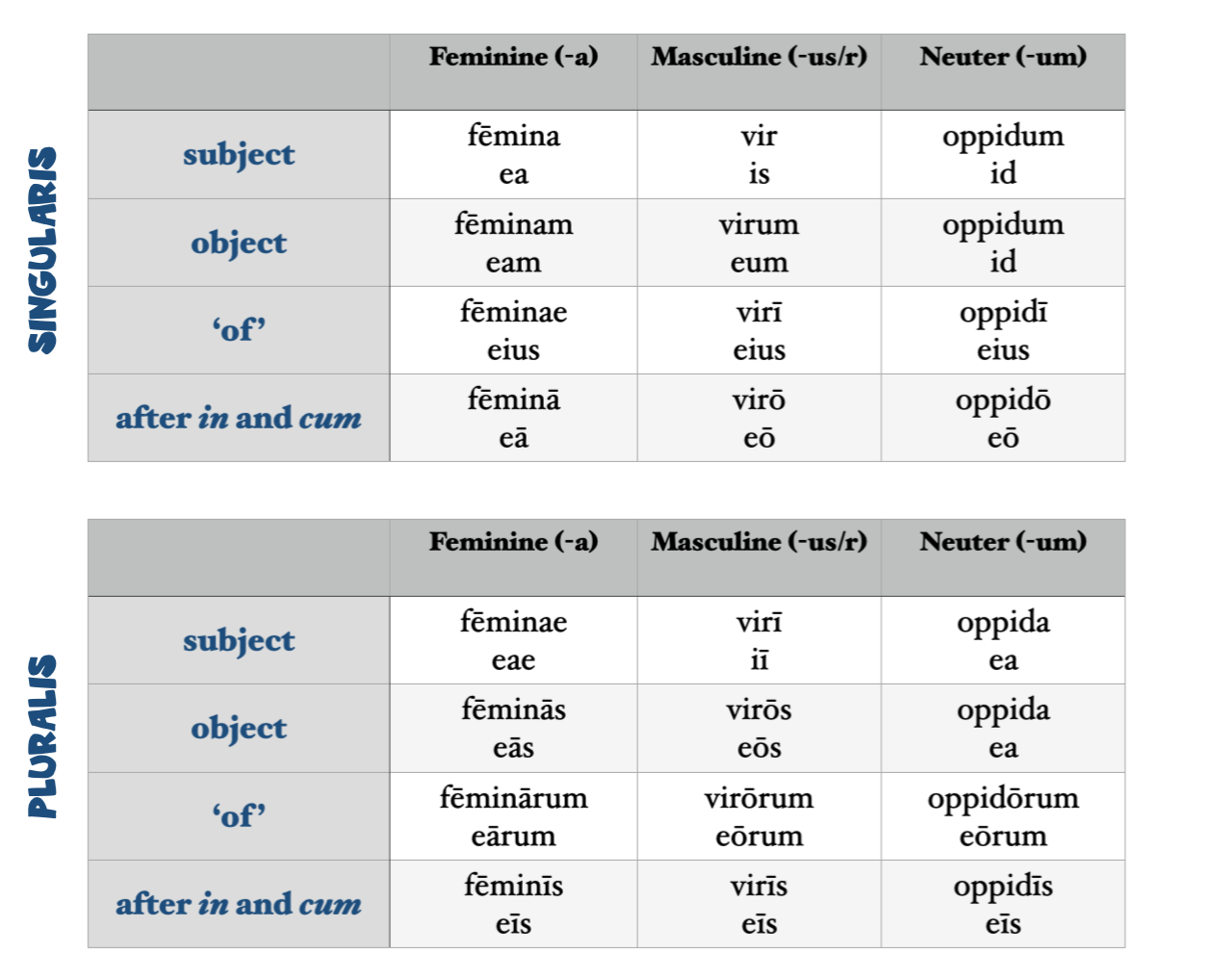Salvēte, sodālēs.
In Lesson 51 we saw the following table. It presents the different endings that are placed on nouns, depending on the role they are playing in their sentence (subject, object, ‘of’ or after in and cum), the noun type they belong to (-a, -us/-r or -um), and whether they are singular or plural. (It also shows the form of she/he/it that would replace that noun when needed). The only thing that has changed since Lesson 51 is the list of prepositions in the final line: it would now read ‘after in, cum, sine, ā/ab and ē/ex’.
The time has come to introduce the concept of cases. While we could go on saying that fēmina, vir, oppidum, fēminae, virī and oppida are all in their subject forms, most grammarians would say that they are all nōminātīvus (in the nominative case), and that the nōminātīvus is the case used to indicate a subject. Likewise, we could continue to say that fēminam, virum, oppidum, fēminās, virōs and oppida are all in their object forms, but most grammarians would say that they are accūsātīvus (in the accusative case), and that the accūsātīvus is used to indicate an object. The case used for ‘of’ is genitīvus and after the pronouns in, cum, sine, ā/ab and ē/ex we use the ablātīvus.
All of this begs questions; Why use these fancy grammatical terms at all? Isn’t it simpler just to refer to these sets of endings by the role they play? Well, that only works to a point. The problem is that these cases can often perform more than one role. For example, here are two things that we already know:
The accūsātīvus is used to show that a word is an object.
The ablātīvus is used with certain prepositions (in, cum, sine, ā/ab and ē/ex).
But, the accūsātīvus has more than one role:
The accūsātīvus is used with certain prepositions (inter, ad, ante, post, prope, circum, apud and per).
Take these two sentences: Iūlia Iūlium et Aemiliam amat. Iūlia inter Iūlium et Aemiliam dormit. Julia loves Julius and Aemelia. Julia sleep between (inter) Julius and Aemilia. In both sentences Iūlium and Aemiliam are accūsātīvus. In the first they are accūsātīvus to show that they are the object. In the second it is to show that they are following inter. And that is why we need to talk about cases.
Speaking of inter, in today’s reading you are going to learn about some of the major roads (viae) of Italy and the towns they run between. Take the time to locate each town and each road on the map as you are reading.
from Lingua Latīna Per Sē Illustrāta, page 40.
READ Capitulum Sextum, lines 1-7.
Satis est. See you again shortly.


